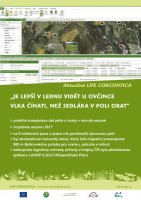2016 - The next to last season of meadow care from the Life Corcontica project
Again, we have a year more. And what happened in the past year? In a nutshell, let us take a look at the article below. You can read the individual activities, goals, and outputs for the entire duration of the project in the side menu on the Activities and Outputs tab.
All preparatory activities, ie activity A, were completed and in 2016 they were no longer operational.
The mowers made in A2 activity in 2015 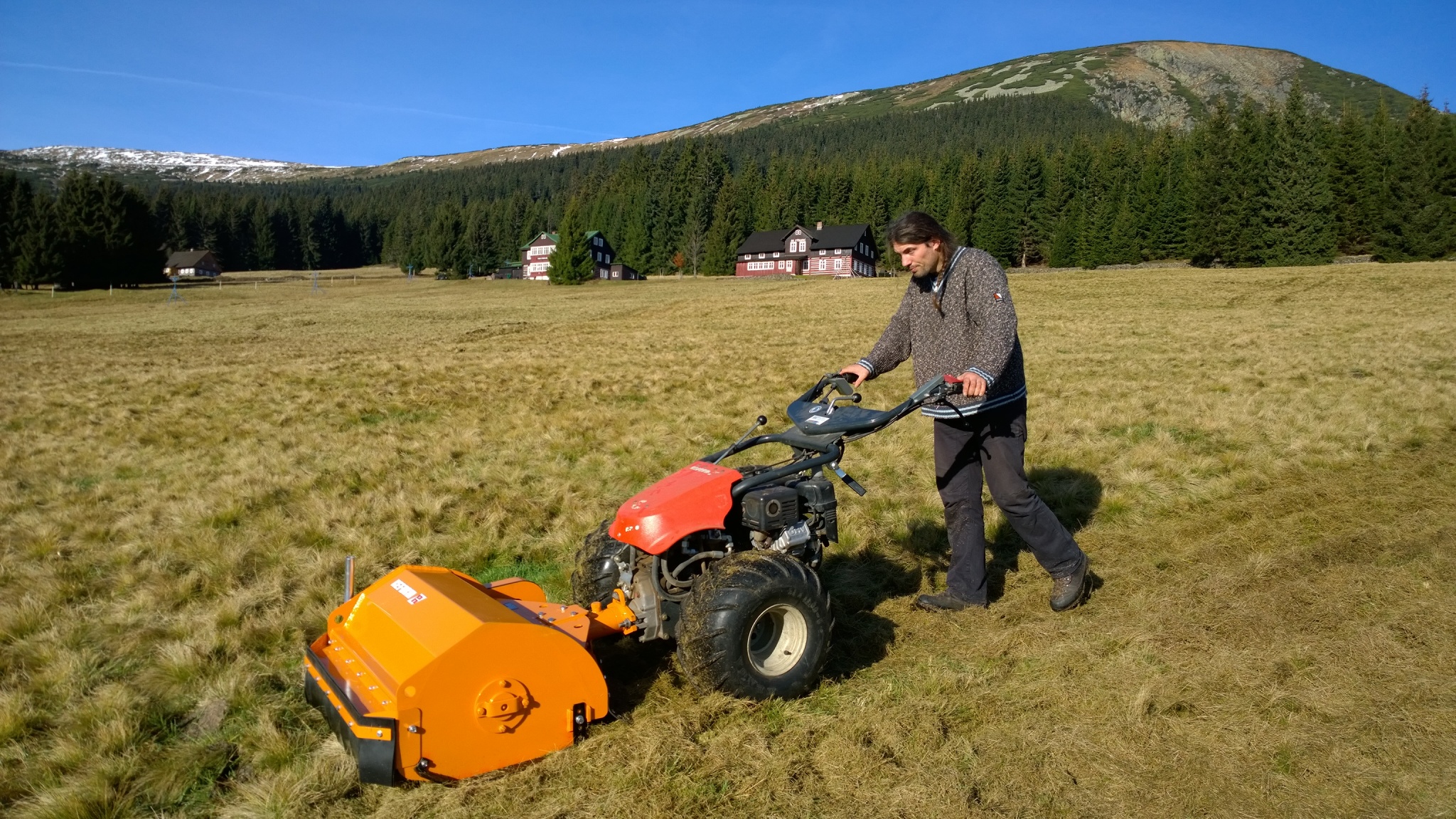 also worked
also worked
throughout this season, cutting about 15 hectares of
often inaccessible or buffalo meadows. Here we also
managed to dry the biomass, pack it and give it to
the public.
As in previous years, we continued our implementati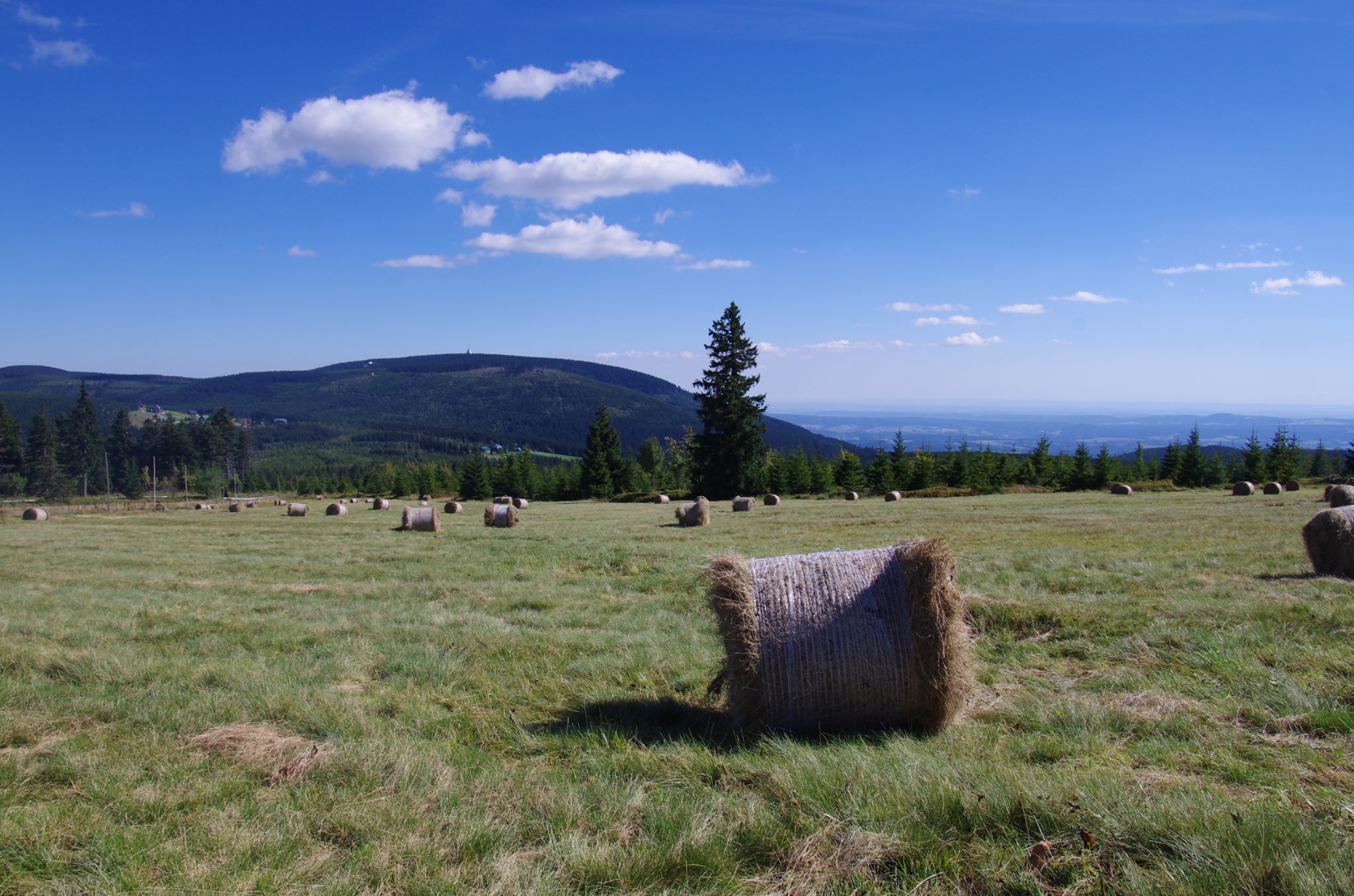 on activities.
on activities.
This year, we managed to manage slightly less meadow enclaves from this project. From 47 of 2015, we have left "only" 41. And the rest? Six pioneers, the first 90-hectare enclaves that left the project,
went into so-called after-care. Care that
is no longer financially supported by the
LC project. Of the approximately 390 ha, which are managed by the project, they
are less than 30 ha in the care of the owners, the tenants take care of the rest.
Almost half of the meadows are cut, the other half are grazed. Again, we have fallen over 2 thousand animals. The sheep still prevail, but on the meadows (which are suitable for us) we gradually increase the herd of crayfish, mostly meat breeds.
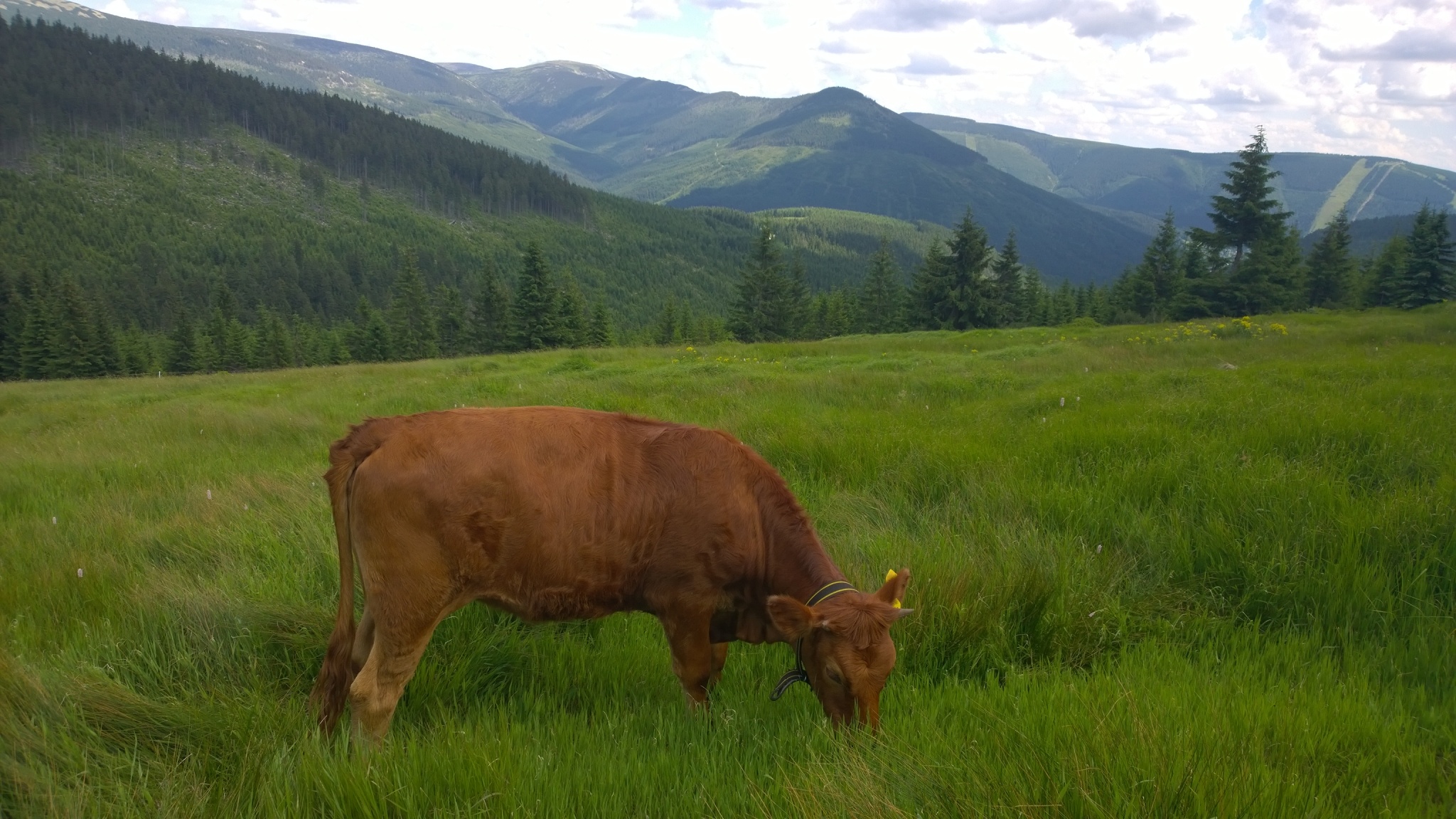
As every year, we are working with the farmer on many areas to do so-called superstructure activities, such as spring dragging, mowing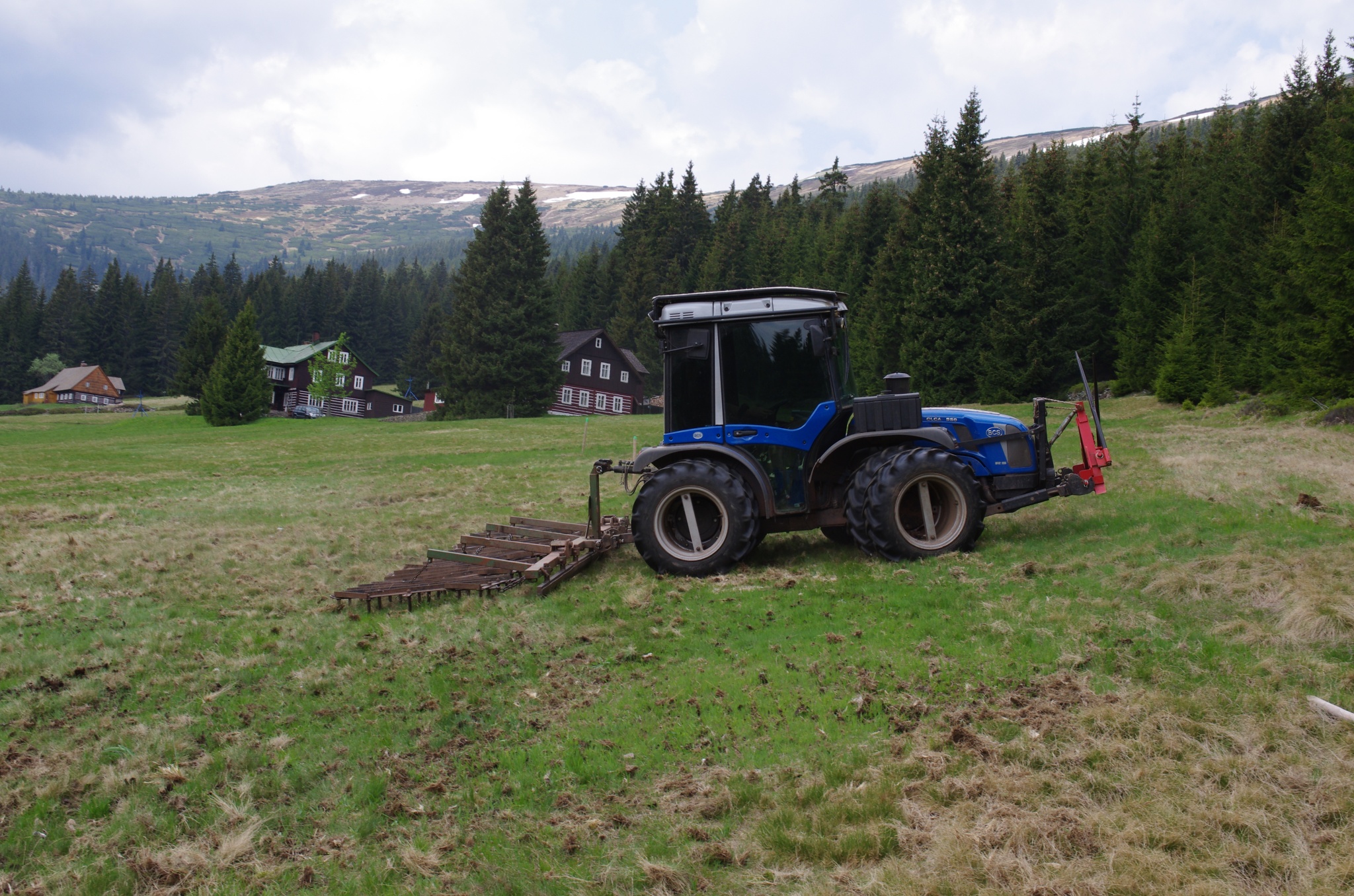 pastures, raking and leaving uncut belts in meadows. This is how we try to shatter the established meadow management into the largest mosaic. Such care is suitable not
pastures, raking and leaving uncut belts in meadows. This is how we try to shatter the established meadow management into the largest mosaic. Such care is suitable not
only for herbs but also for animals,
especially invertebrates.
With the mosaic, they cut again, just like
last year's play on Patejdlova shed.

 Many Arctic enclaves still require vigorous
Many Arctic enclaves still require vigorous
technical interventions to restore sustainable
regular management. In 2016, therefore, a four
member SKRNAP working group was again
working on mountain meadows. On 4.5 hectares,
the invasive alpine sorrel (Rumex alpinus) and
Lupinus polyphyllus (Lupinus polyphyllus) were
disposed of both mechanically and chemically.
From 4.6 hectares of meadows, the ravines were ravaged. The members of the group renewed 3,637 meters of gutters and brought out 26.8 tons of stones from their meadows, which they built on the wall or the debris.
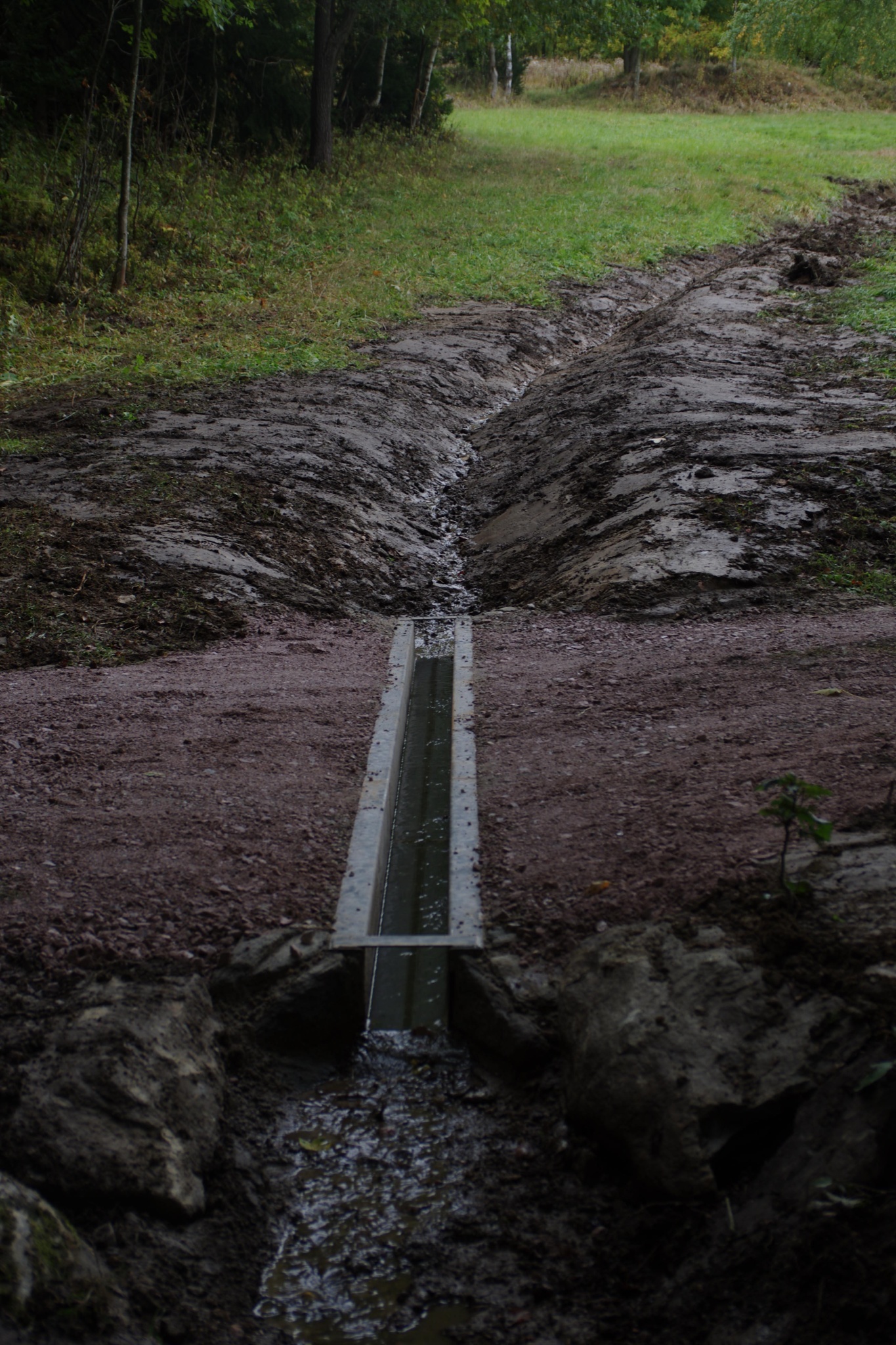
Activities over the technical and time capacities of the workgroup, often requiring special technology, were contracted with external firms in the form of framework contracts or sub-orders. Two companies provided tree
cuttings (3.7 ha) and one redevelopment (1.580 m) and
waste disposal (48.5 t).
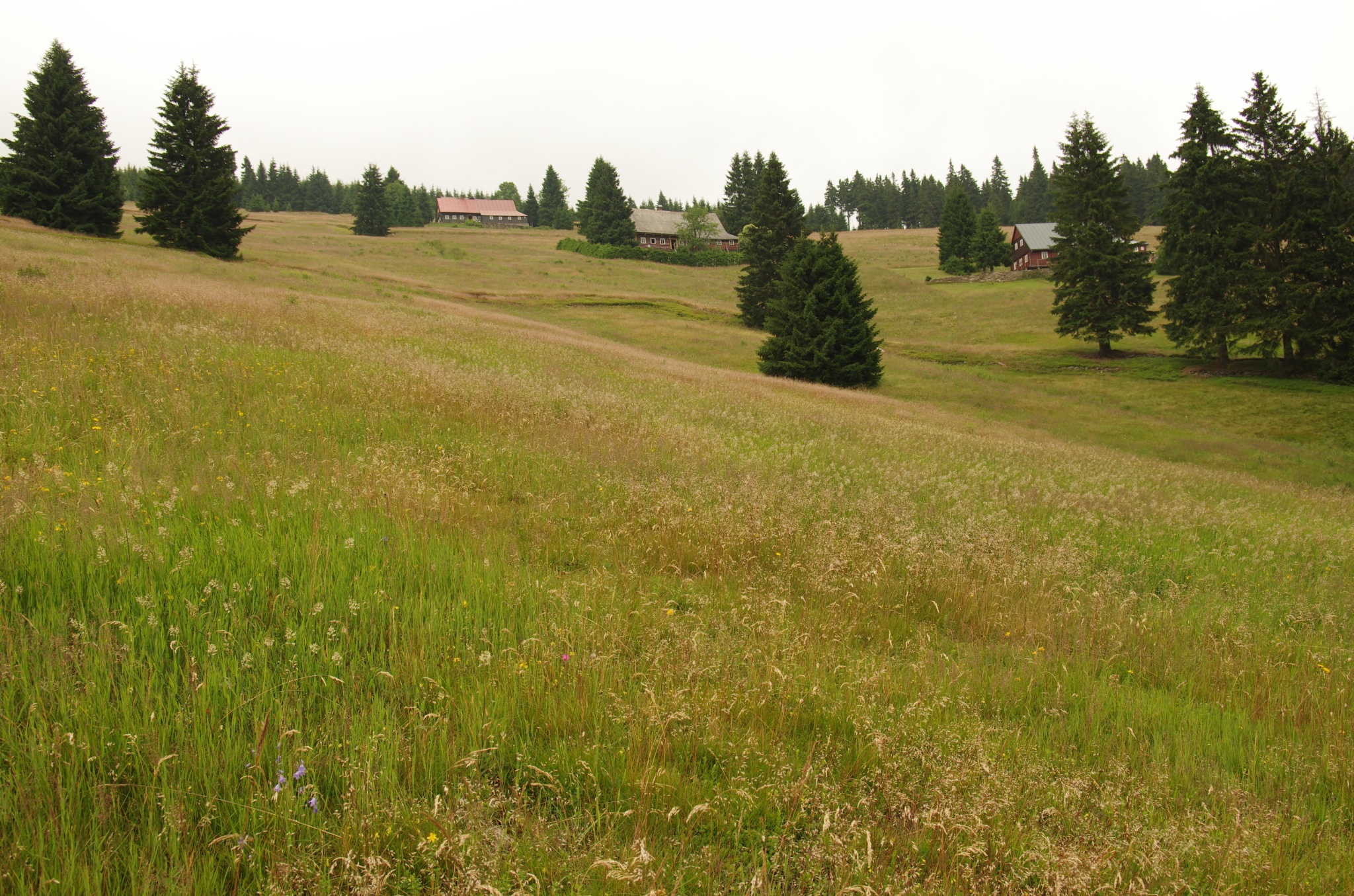 One new Cold Management Plan (C5 activity) was created for
One new Cold Management Plan (C5 activity) was created for
a farmer operating on the encasement of Shima's cottage. In
total, 11 farms and 130 hectares of maize mead are now
involved in the project. Using framework contracts, farmers
are encouraged to carry out work to improve the status of
grasshoppers.
We continue to take care of two localities with  the occurrence of a rare bitterness (activity C6). Both sites were deprived of old age in the spring, in the early summer and autumn they were cut off, just before the winter there was disturbed management to promote the emergence of seedlings.
the occurrence of a rare bitterness (activity C6). Both sites were deprived of old age in the spring, in the early summer and autumn they were cut off, just before the winter there was disturbed management to promote the emergence of seedlings.
In the autumn of 2016, a field study of the limitation of the reproduction of Gentian by pollen was carried out (Petra and Štěpán Janeček, dep. In KRNAP Administration).
The Albeřický brook (River Albeřice) was modified in 2015 for activity (Activity C7), and this year it worked on the Bolkov creek, where the reconstruction of one concrete step on the boulder slip was completed. At 750 m of water stream in the village of Rudník, the nature of a close-up of the technically developed riverbed has taken place. The gateway was 750 meters away.
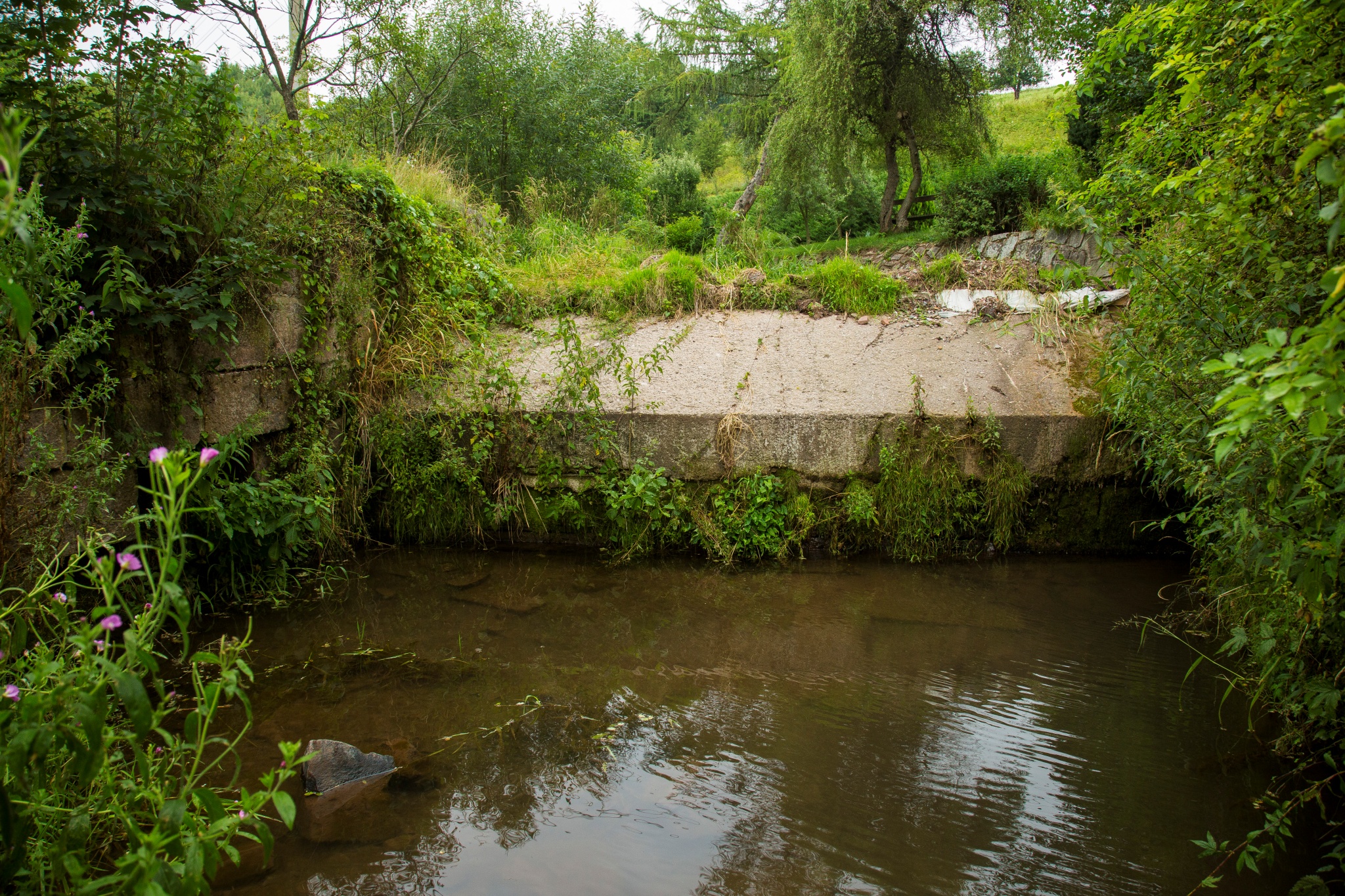
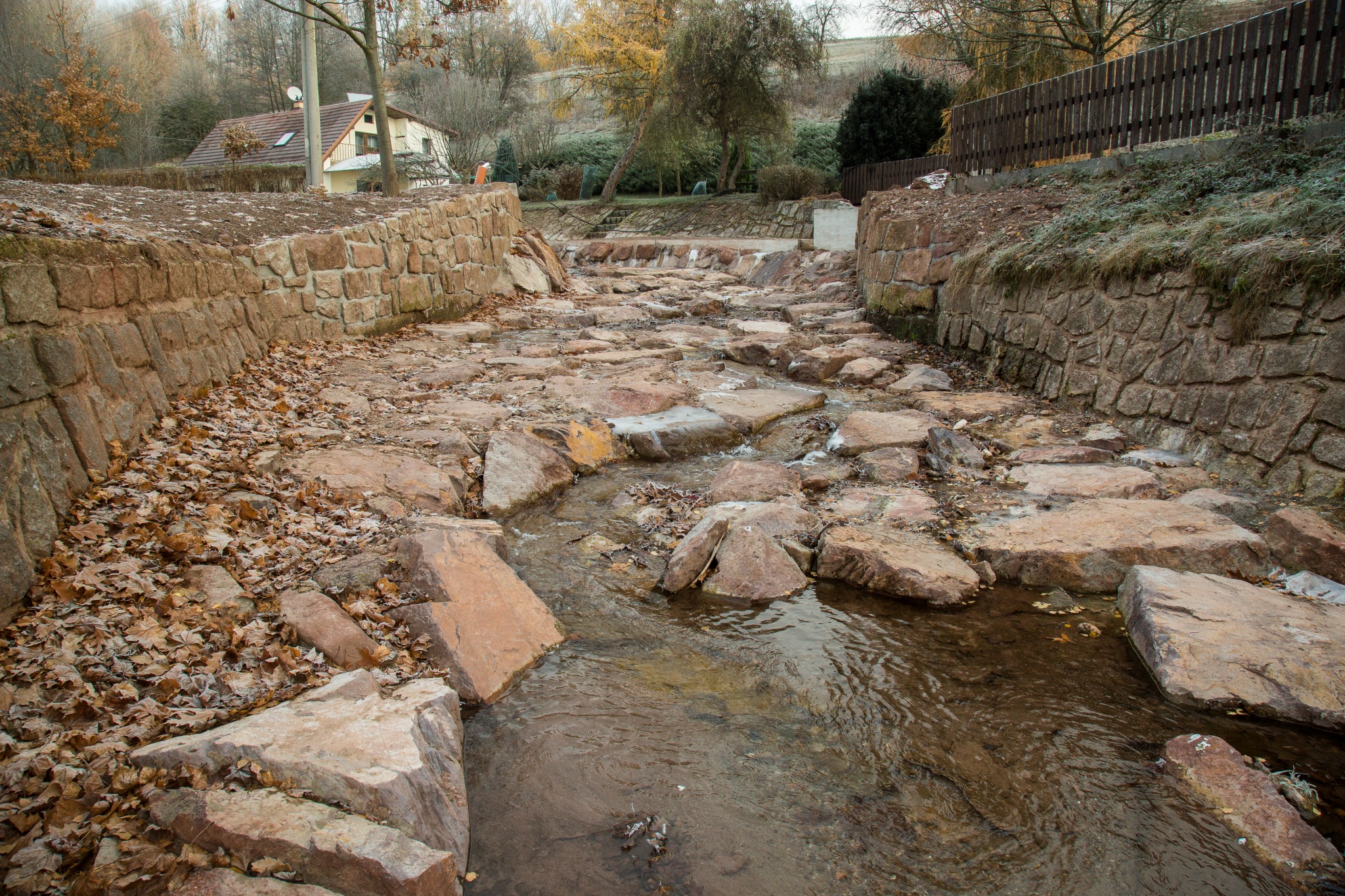
The Methodology for the assessment of the impact of the use of watercourses on the bullhead was established for state administrations.
We continue to collect data for the monitoring of biotopes and selected species on 29 priority enclaves and farms, and we do not forget even the monitoring of grasshoppers (activity D). Now we are evaluating the data from 2013 - 2016 and we will soon be able to show you the results.
And as part of the project promotion, you could read about us in several articles, see us on TV and hear on the radio. We have released 3 press releases - the Meadowgroup works again, Rýchory go through a rejuvenation, and the Mountains are already being fertilized. They wrote about us in 15 articles. Czech Radio has published a report on fertilization - Mountain meadows do not have enough nutrients and must fertilize. You could learn about the bullhead and fish passes in the Giant Mountains on CT1 on the event News.
We gave informations about farming 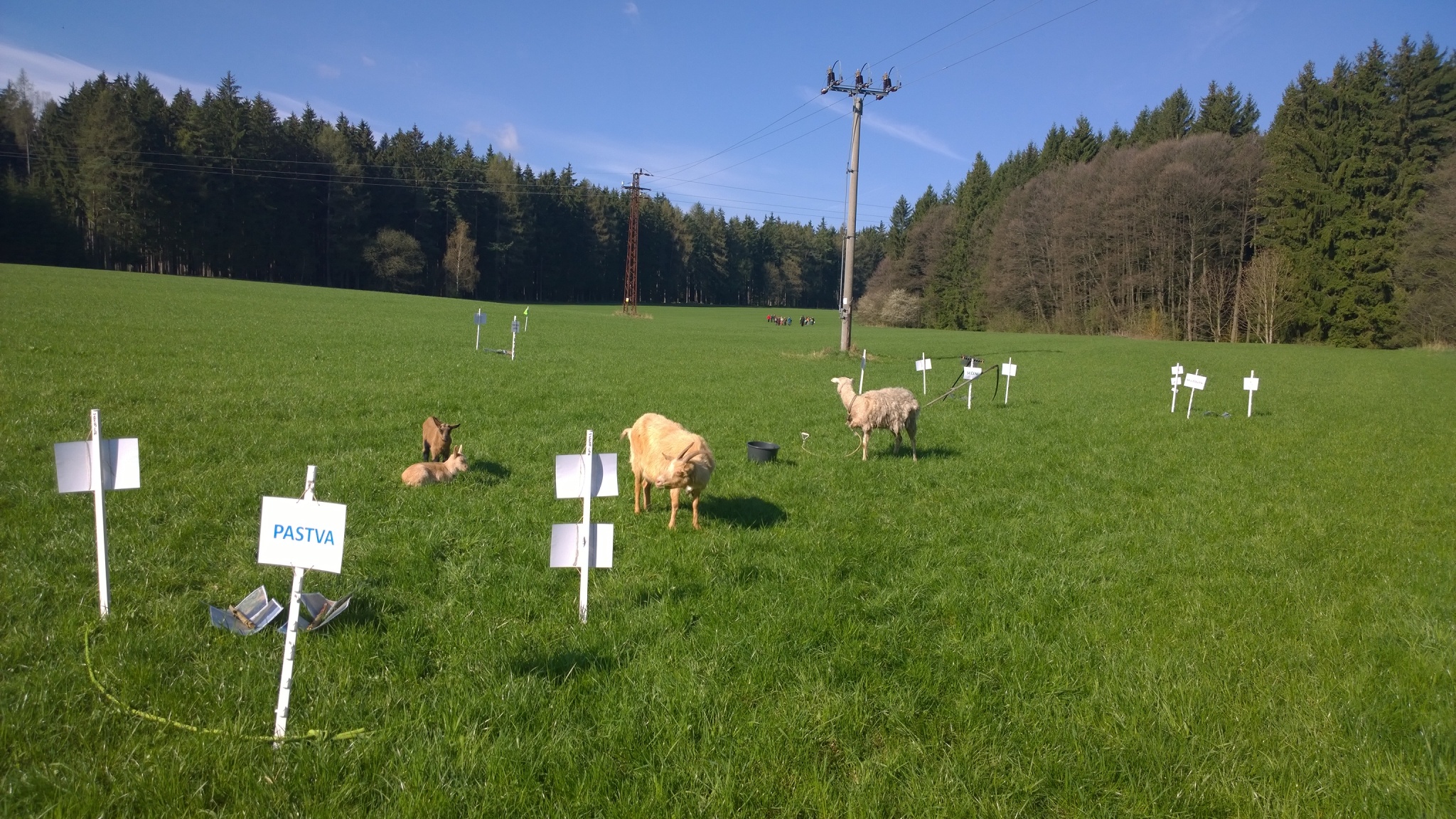 and meadows history to the Brontosaurus movement, in the programe for the Earth Day in Jilemnice, to several classes from elementary schools and colleagues from the Serbian National Park.
and meadows history to the Brontosaurus movement, in the programe for the Earth Day in Jilemnice, to several classes from elementary schools and colleagues from the Serbian National Park.
Already for the second time,
7 classes from the Vrchlabí elementary school came to the educational program of meadows.
Our colleagues from the KRNAP Administration carried out spring and summer care in the meadows, specifically we visited the Sklenářovice locality.
A new external monitor has been assigned to us from the European Union, which we have done both through the background of the project and the implementation of the management directly on the meadows.
We visited the project The Nardus grass Rescue in EVL Beskydy (LIFE12 NAT / CZ / 000629) and in 2016 ČSOP Salamandr (which implements the project) came to see the Giant Mountains and the Life Corcontica project.
Several groups of volunteers helped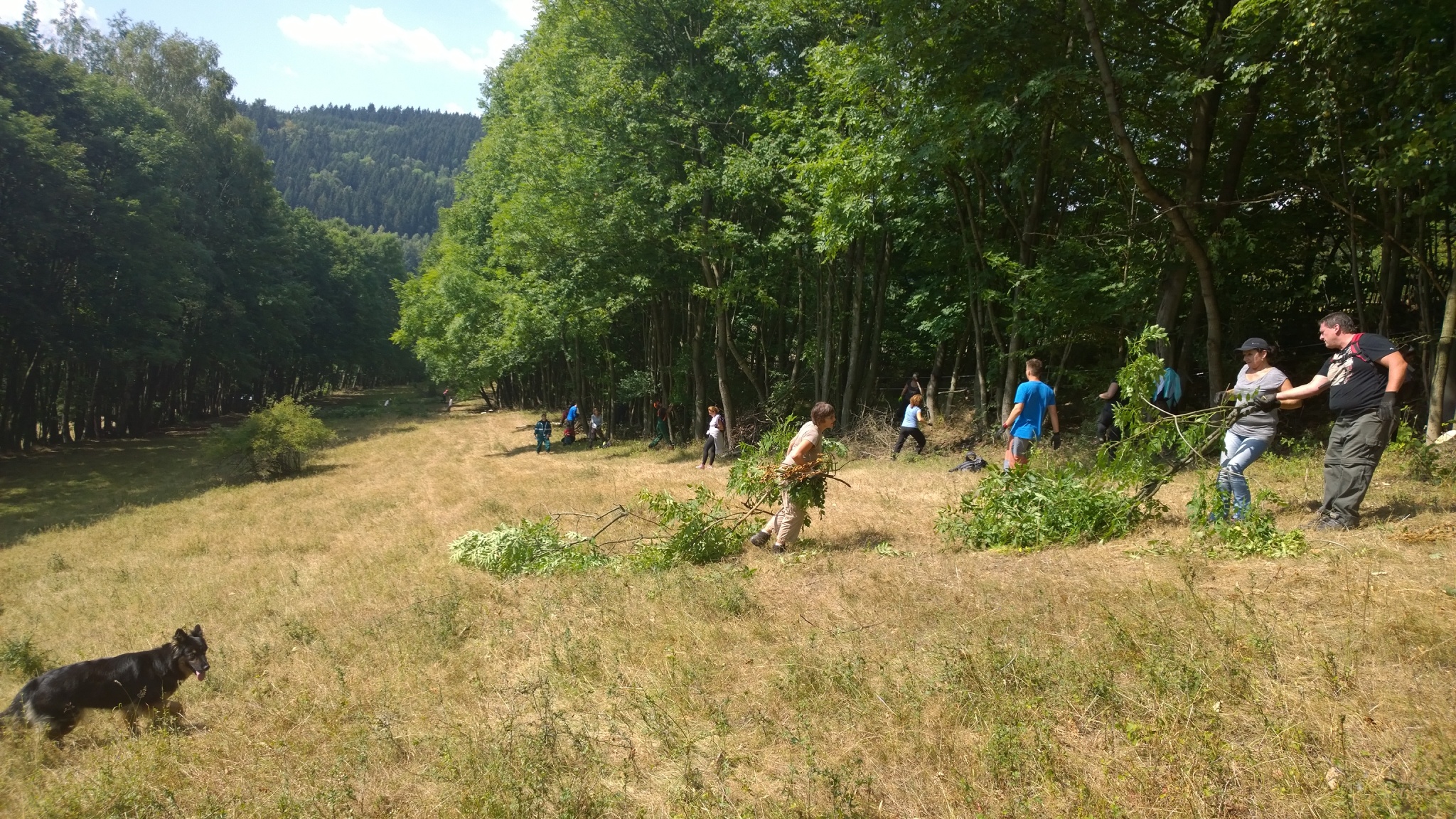 us with the cleaning of the meadows in Sklenářovice. On Day of Earth, the 8th and 9th grade of the Lánov elementary school helped us with raking and cleansing. Later in the season, students from the Czech Forestry Academy Trutnov arrived. In the
us with the cleaning of the meadows in Sklenářovice. On Day of Earth, the 8th and 9th grade of the Lánov elementary school helped us with raking and cleansing. Later in the season, students from the Czech Forestry Academy Trutnov arrived. In the
autumn a group of volunteers from ČMSS helped us as part of their teambuilding event. We thank all those who are interested in our help.
Reedication of Pestrolučník was in the last month of the year, they are now fully available to those interested who want to learn something about good agricultural practice in the Giant Mountains.
For the farmer, we held meetings on selected meadow enclaves. Spring and summer care in the meadows were presented in these places. Subsequent discussion was again very beneficial for all stakeholders. A July also held a seminar on agro-environmental climate measures for the years 2014-2020.
About bullhead and flow management took place a so-called workshop entitled "Alternative methods to support established populations of trout by way of incubation".
We participated in three conferences in the Czech Republic - Pasture in Protected Areas, Pasture and Water in the Landscape and Presentation of LIFE Projects in the Czech Republic.
Our project sheeps were at the meadow enclaves to inform about the activities of the project. One of them was left in the care of the farmer once again, the other one we must saved from the snowdrift in Klášterka, where we forget it in the autumn. You could see the rescue photo on our PF.

So much in brief about what's happening in the project.
Watch our news and Facebook sites.
And now we're going to get to the beginning of the 2017 season, our last one.

